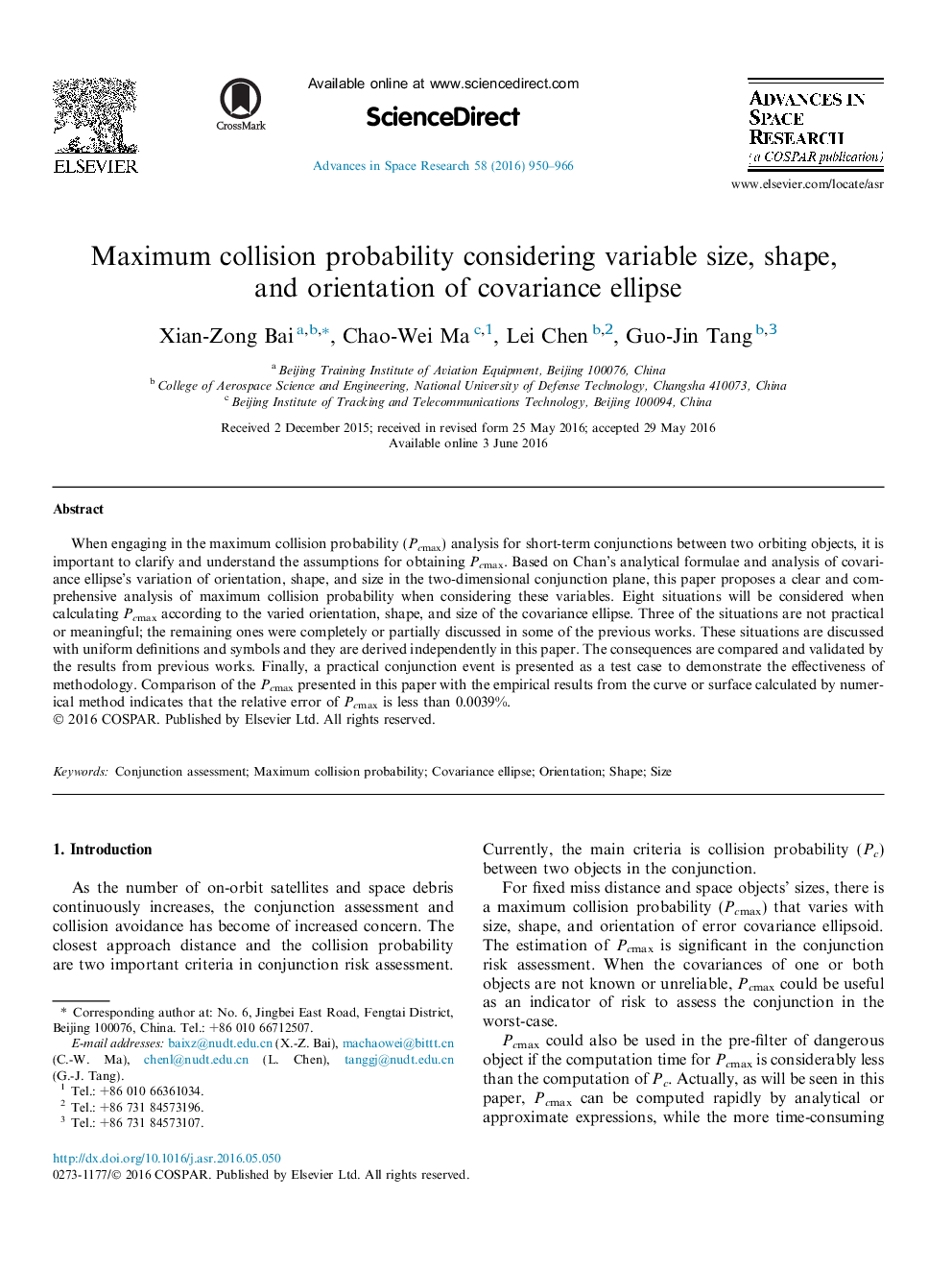| Article ID | Journal | Published Year | Pages | File Type |
|---|---|---|---|---|
| 1763212 | Advances in Space Research | 2016 | 17 Pages |
Abstract
When engaging in the maximum collision probability (Pcmax) analysis for short-term conjunctions between two orbiting objects, it is important to clarify and understand the assumptions for obtaining Pcmax. Based on Chan's analytical formulae and analysis of covariance ellipse's variation of orientation, shape, and size in the two-dimensional conjunction plane, this paper proposes a clear and comprehensive analysis of maximum collision probability when considering these variables. Eight situations will be considered when calculating Pcmax according to the varied orientation, shape, and size of the covariance ellipse. Three of the situations are not practical or meaningful; the remaining ones were completely or partially discussed in some of the previous works. These situations are discussed with uniform definitions and symbols and they are derived independently in this paper. The consequences are compared and validated by the results from previous works. Finally, a practical conjunction event is presented as a test case to demonstrate the effectiveness of methodology. Comparison of the Pcmax presented in this paper with the empirical results from the curve or surface calculated by numerical method indicates that the relative error of Pcmax is less than 0.0039%.
Related Topics
Physical Sciences and Engineering
Earth and Planetary Sciences
Space and Planetary Science
Authors
Xian-Zong Bai, Chao-Wei Ma, Lei Chen, Guo-Jin Tang,
